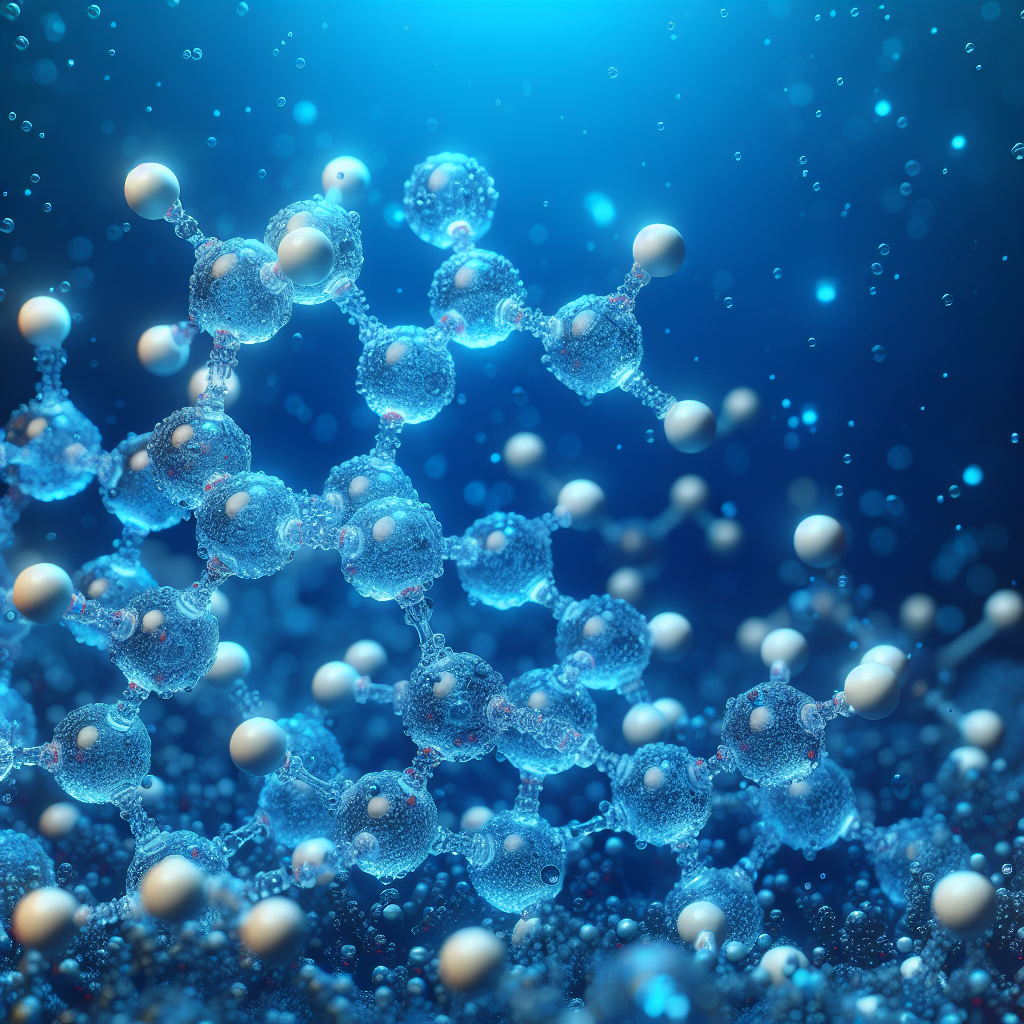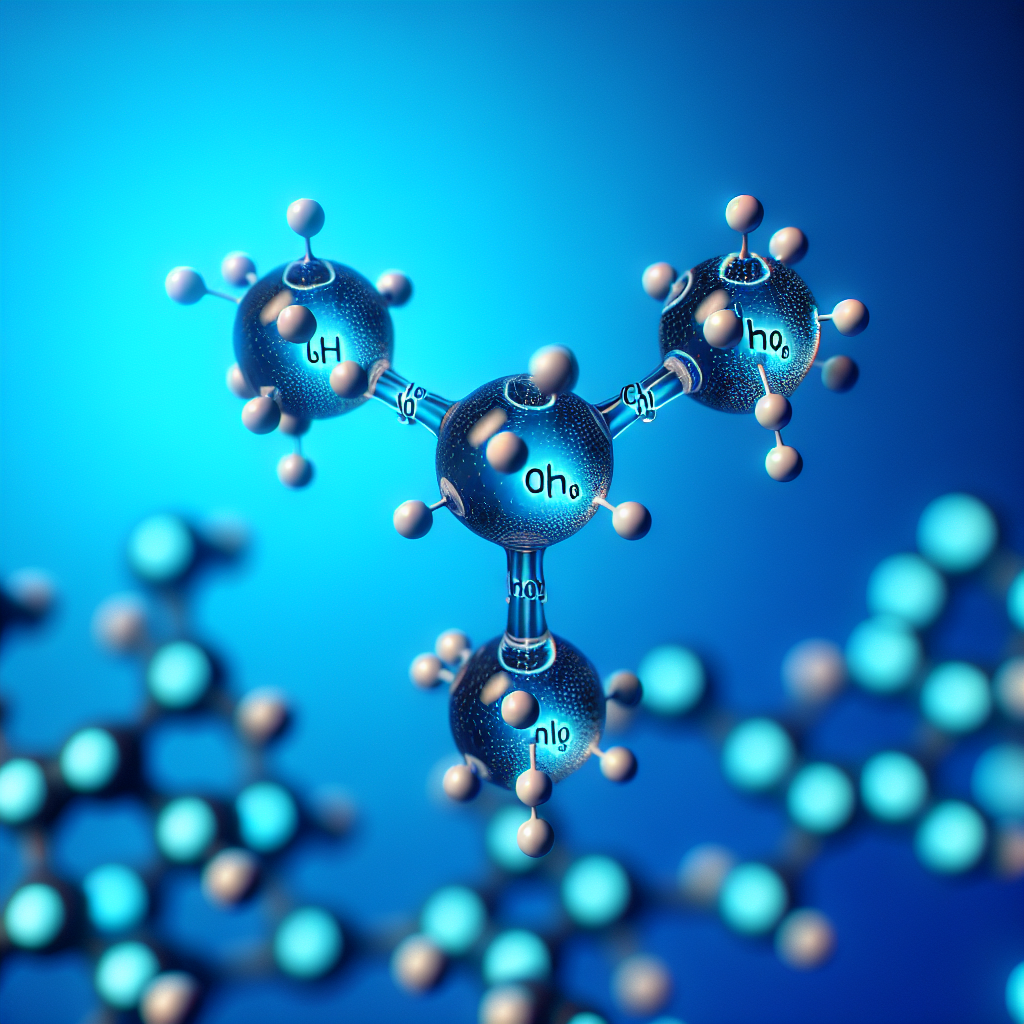
The fascinating characteristics of this essential liquid stem from the interactions between its constituent molecules.
Each water molecule consists of two hydrogen atoms and one oxygen atom, creating a distinctive polar arrangement.
This chemical polarity fosters the formation of hydrogen bonds, which, although relatively weak, are vital for many of its remarkable properties of water.
These bonds give rise to cohesive interactions between molecules, contributing to high surface tension and increased boiling and melting points. Grasping these unique traits illuminates water’s crucial role in supporting life on Earth through its distinctive molecular properties and hydrogen bonding.
Click here to learn more about: 7 best hydrogen water bottles in 2024 top tier ppm
Understanding Hydrogen Bonds In Water
The interactions between individual water molecules are essential to the distinct properties previously discussed, particularly regarding the chemical characteristics and behaviors of water. This connection occurs when a hydrogen atom, linked to an electronegative atom like oxygen, gains a partial positive charge, which leads to significant attractions between molecules.
This positive charge draws the oxygen atom towards the partial negative charge present on other electronegative atoms, fostering a cohesive network within the liquid.
Additionally, the uniquely bent structure of water molecules enables them to engage in multiple attractions, leading to properties such as notably high boiling and melting points.
When compared to stronger ionic or covalent bonds, the connections formed by hydrogen bonds in water are relatively weak, generally yielding energy values ranging from 5 to 30 kcal/mol. This lesser strength is offset by the critical role these interactions play in forming various chemical compounds and influencing the behaviors of gases, liquids, and other substances at the atomic level.
The impact of such hydrogen bonds extends beyond basic physical properties, as they also facilitate crucial phenomena like cohesion and adhesion, which contribute to the unique properties of water, including its capacity to support life on Earth. Understanding this framework of interactions not only clarifies the characteristics of water but also emphasizes the importance of molecular forces in chemical and biological processes.

The Role Of Cohesion In Water’s Behavior
The unique nature of water enhances its ability to sustain life through its cohesive properties. This remarkable characteristic arises from the formation of hydrogen bonds that enable water molecules to cling together as they move through plants.
As liquid water is absorbed, this cohesive force efficiently transports essential nutrients from the roots to the leaves.
The process of transpiration is closely linked to these interactions, allowing water to exit through stomata, which are tiny openings on plant surfaces.
This loss generates negative pressure within the plant’s vascular system, effectively pulling additional water upward and facilitating higher moisture availability. Such dynamics not only support robust plant growth but also significantly influence local weather patterns, affecting humidity levels and potentially leading to precipitation, such as rain.
Understanding these critical relationships helps us recognize the behaviors of liquid water and their broader implications for ecosystem health and stability.
Water’s Role in Ecosystems
- Hydrogen bonds create cohesion, essential for nutrient transport in plants.
- Transpiration relies on these interactions, enabling water to exit through stomata and generate negative pressure.
- The movement of water supports plant growth and impacts local weather patterns.
- Shifts in humidity levels resulting from water transport can lead to precipitation, profoundly affecting ecosystem health.
Exploring The Unique Properties Of Water
Building on the understanding of cohesion and plant behavior from earlier discussions, the incredible properties of water extend well beyond basic interactions. These unique characteristics significantly influence ecological systems and the sustenance of life on Earth.
One notable feature arising from the attractive forces between molecules is surface tension, which allows small organisms, such as water striders, to navigate on the surface without breaking through. This property plays a crucial role in maintaining the balance of aquatic ecosystems.
Another essential characteristic is the high specific heat capacity of liquid water, which allows it to absorb substantial amounts of heat without a significant change in temperature. This stability is vital for creating environments that support diverse ecosystems, essentially acting as a buffer against extreme temperature variations.
Additionally, the density anomaly of ice demonstrates its role in preserving aquatic life during freezing temperatures. When water freezes, the arrangement of water molecules results in a lower density, allowing ice to float on liquid water. This insulation is critical for aquatic organisms, as it maintains a suitable habitat below the ice layer.
Furthermore, the polar nature of water molecules leads to strong hydrogen bonding between individual water molecules. This hydrogen bonding creates properties such as cohesion, which ensures that water molecules stick together. Cohesion is significant for the upward movement of water in plants, enabling nutrient transport from roots to leaves. The ability of water to stick to surfaces, known as adhesion, allows it to move through soil and plant tissues effectively, supporting life.
Collectively, these remarkable properties, stemming from the ability of water to form hydrogen bonds, highlight the importance of understanding how such characteristics affect both the environment and the life it sustains.
How Hydrogen Atoms Influence Water Molecules
The arrangement of hydrogen and oxygen atoms in water molecules plays a vital role in their unique characteristics. Each water molecule is made up of one oxygen atom and two slightly positive hydrogen atoms, creating a distinct bent shape that is essential for how water interacts with other substances.
This specific structure enables water molecules to form hydrogen bonds with one another, which significantly affects several properties, such as high boiling and melting points. These properties are crucial for the stability of various biological and environmental systems.
The attraction between individual water molecules enhances cohesion and adhesion, both key to many chemical and biological processes. For example, the cohesion of water enables its movement through plant vessels, while adhesion is important for interactions with surfaces, making processes like capillary action possible.
Moreover, the arrangement of hydrogen and oxygen atoms in water allows it to remain a stable liquid, absorbing heat without experiencing large temperature changes. These qualities create an environment that supports diverse life forms and contributes to ecological balance.
Water’s Molecular Behavior
- Water’s bent molecular shape allows for effective hydrogen bonding.
- Hydrogen bonds contribute to water’s high boiling and melting points.
- Cohesion and adhesion in water are vital for various biological processes.
- The unique properties of water support life and environmental stability.
The Impact Of Electronegativity On Hydrogen Bonds
Based on the insights gained from previous discussions about molecular behavior, the concept of electronegativity is important in understanding water’s unique interactions. This tendency of atoms to attract electrons leads to polar covalent bonds, which significantly influences the properties of water.
In the case of water, the oxygen atom shows a stronger attraction for electrons compared to the two hydrogen atoms. This difference causes unequal electron sharing, resulting in a dipole moment and defining water as a polar molecule.
Because of this polarity, the hydrogen atoms in water can interact with neighboring water molecules. This interaction allows the formation of a hydrogen bond between them. Although these bonds are weaker than covalent bonds, their combined effects are significant, influencing properties such as the density of water and its cohesion of water, both crucial for various biological and environmental processes.
Electric charges in water molecules result from the difference in electronegativity between oxygen and hydrogen, with oxygen carrying a partial negative charge and hydrogen atoms having a partial positive charge. This charge distribution not only encourages the formation of hydrogen bonds but also impacts how water behaves in different states, affecting everything from surface tension to its ability to dissolve other substances. In summary, understanding these connections enhances our appreciation for how molecular structure shapes the unique characteristics of water essential to life.
Why Water Is A Polar Molecule
The structure of water significantly shapes how it interacts with other substances. A water molecule is formed from two hydrogen atoms and one oxygen atom, creating a polar covalent bond that influences its chemical characteristics.
This bond arises because oxygen has a higher attraction for electrons, resulting in a partial negative charge on the oxygen. In contrast, the hydrogen atoms carry a partial positive charge. This distribution of charge affects how hydrogen bonds develop, as the positive hydrogen from one molecule interacts with the negatively charged oxygen from another.
The interactions from these bonds give water its unique properties, allowing it to dissolve various ionic and polar compounds effectively. This ability is vital for numerous chemical processes in nature, as strong hydrogen bonds within water molecules enhance its role as a solvent in biological and environmental systems. Such properties are crucial for processes like nutrient transport in plants and the chemical reactions required for life.
Water’s Molecular Structure
- The polar covalent bonds in the water molecule create distinct positive and negative regions, enabling unique interactions.
- The difference in attraction between oxygen and hydrogen leads to partial charges, which greatly affect water’s behavior.
- Hydrogen bonds contribute to water’s high surface tension and its ability to dissolve many chemical substances, illustrating its solvent capabilities.
- These essential characteristics empower biological functions, making water a critical component for all known life forms.
The Significance Of Hydrogen Bonding In Nature
Crucial Role in Biological Processes
Insights from earlier discussions highlight the crucial role that hydrogen bonding plays in sustaining life on Earth. The attraction among individual water molecules leads to a cohesive environment essential for numerous biological processes.
Stabilizing Genetic Material
For instance, individual hydrogen bonds stabilize base pairing in DNA, a fundamental aspect of genetic replication and preservation of cellular information. This stability is paramount, as it ensures the integrity of genetic material across generations.
Maintaining Protein Structure
The folding of proteins depends on the formation of bonds between positively charged hydrogen atoms, which is vital for maintaining their structure. This structural integrity is essential for proteins to function correctly and influences various metabolic processes within living organisms. The ability of proteins to maintain their form is a direct result of the interactions involving hydrogen bonding.
Influence on Ecosystems
In ecological contexts, the number of hydrogen bonds directly affects how efficiently plants can uptake water, which in turn impacts nutrient transport and overall ecosystem health. Understanding these intricate interactions allows scientists to explore the implications of climate changes on biological systems and the environments where they thrive. Furthermore, the properties of water, including its high surface tension and cohesion, are essential for processes like transpiration in plants.
The Relationship Between Hydrogen Bonds And Surface Tension.
Understanding how hydrogen bonds contribute to the unique properties of liquids highlights their significance. The forces within liquids define their characteristics, particularly how water behaves at the surface where different layers of molecules come together.
This unique behavior is largely influenced by the strong adhesion of water, which allows it to form cohesive layers that create a thin sheet of molecules. Understanding how these forces operate not only explains fluid behavior but also shows the critical role of these interactions in maintaining surface tension.
In nature, water striders exemplify the remarkable ability of water to support weight through surface tension, illustrating how molecular interactions enable various species to thrive. In everyday life, the tendency of water to stick to surfaces can be altered by substances like detergents, demonstrating how the strong adhesion of water molecules is influenced by their ability to interact with other chemical substances. This phenomenon is a fundamental reason for the properties of water and its unique behaviors in different situations.
Water Properties
- Water molecules exhibit strong adhesion, allowing them to form cohesive layers at the surface.
- Hydrogen bonds are crucial for maintaining surface tension in liquids like water.
- Water striders demonstrate the ability of water to support weight due to surface tension.
- Detergents can alter the adhesion properties of water, affecting its interaction with surfaces.
Will Hydrogen Water Lower Blood Pressure? Discover the Benefits Today!
Discover the Benefits of Why Use Hydrogen Water Bottle for Enhanced Hydration
